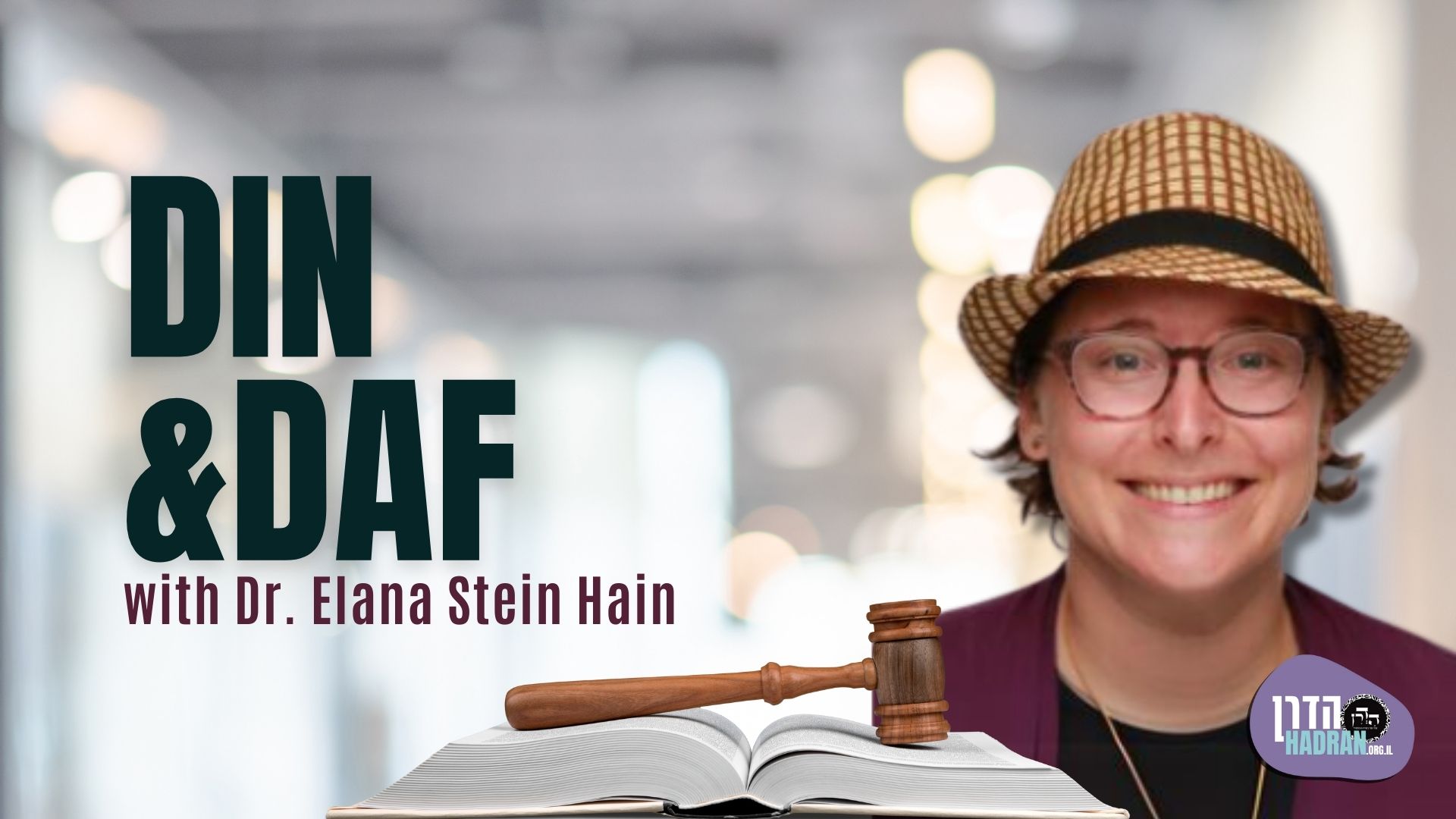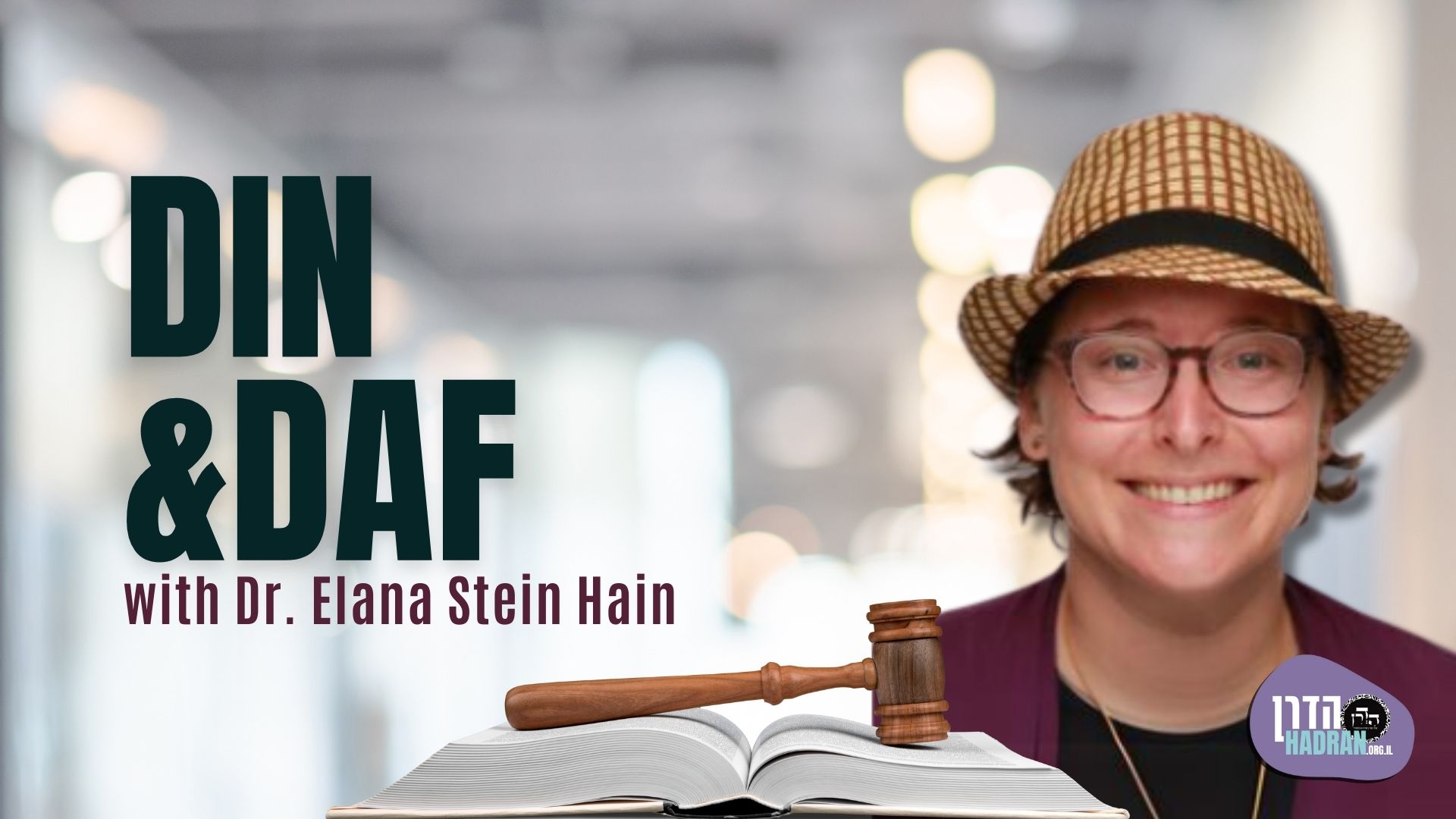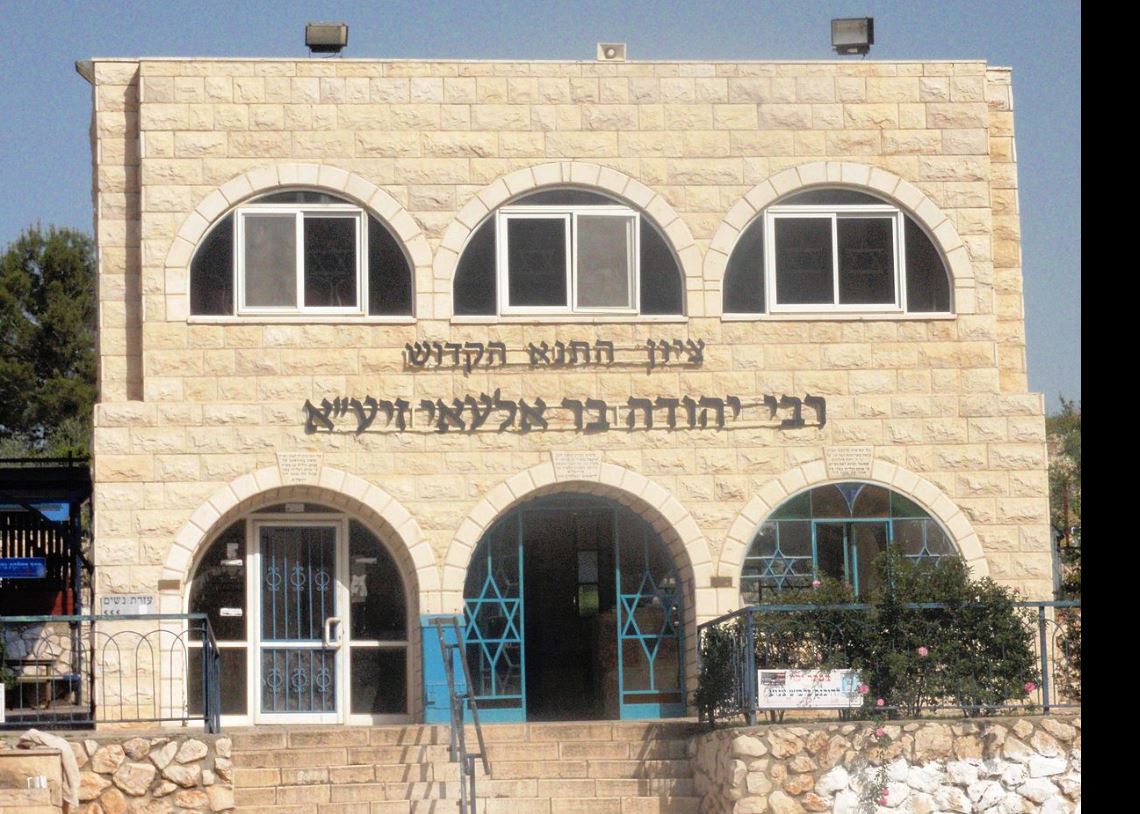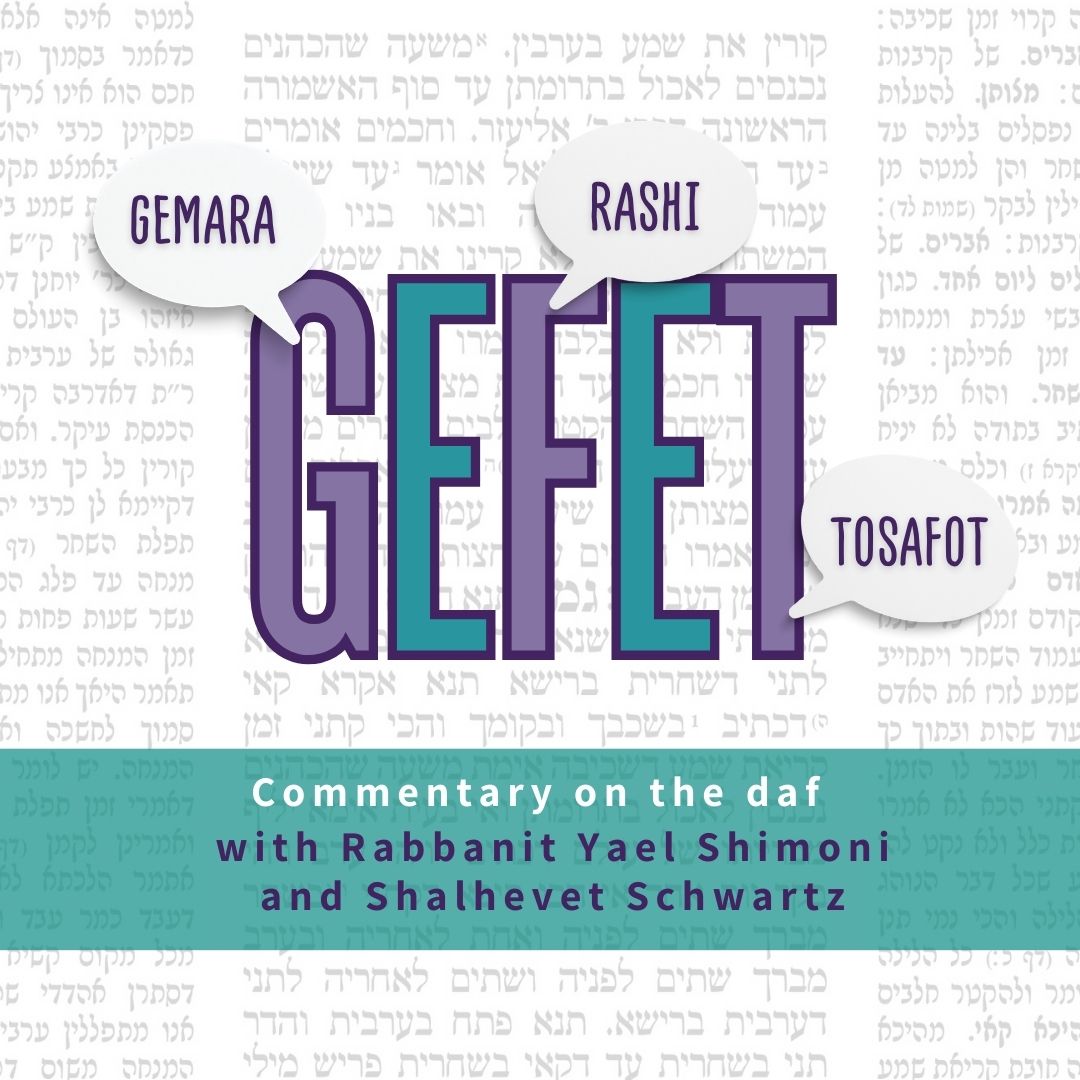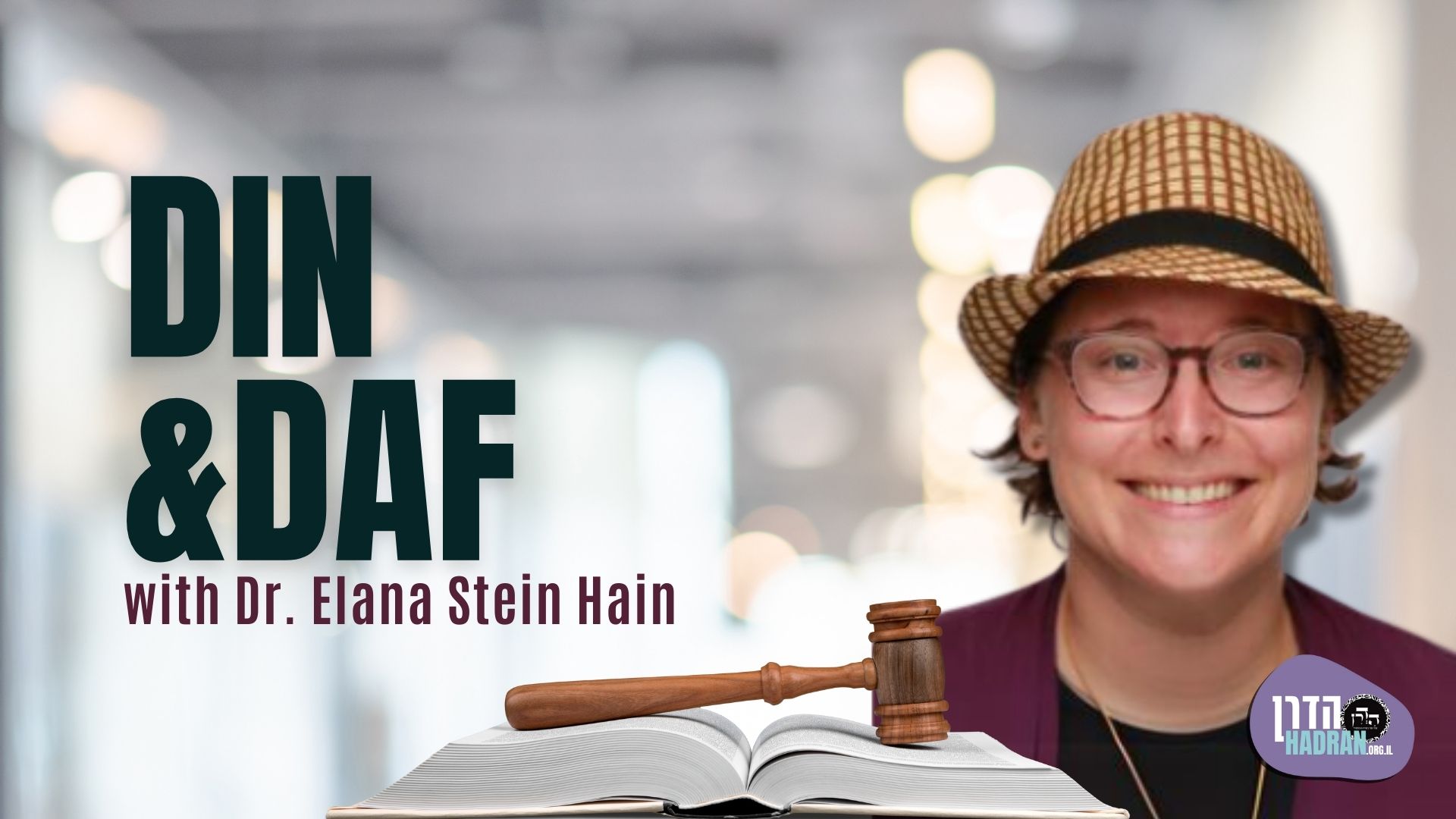How many 29 day months or 30 day months can there potentially be in a year? How many days from the time of baking the two loaves for Shavuot or the showbread can they be eaten? How many days after birth can one potentially do a brit mila (on time)? Ulla and Rav Huna disagree regarding if there is a possibility to have either 8 thirty day months or 8 twenty nine day months or if there is only a possibility to have 8 twenty nine day months. There is a different tannaitic opinion (against our mishna) that only allows for 6 of each.
This week’s learning is sponsored by Robert and Paula Cohen in loving memory of Joseph Cohen, Yosef ben Moshe HaCohen, z”l. “He was hard working, loved to sing, esp. as a chazan, and was very dedicated to his family and community.”
Want to dedicate learning? Get started here:


Today’s daily daf tools:
This week’s learning is sponsored by Robert and Paula Cohen in loving memory of Joseph Cohen, Yosef ben Moshe HaCohen, z”l. “He was hard working, loved to sing, esp. as a chazan, and was very dedicated to his family and community.”
Today’s daily daf tools:
Delve Deeper
Broaden your understanding of the topics on this daf with classes and podcasts from top women Talmud scholars.
New to Talmud?
Check out our resources designed to help you navigate a page of Talmud – and study at the pace, level and style that fits you.
The Hadran Women’s Tapestry
Meet the diverse women learning Gemara at Hadran and hear their stories.
Arakhin 9
קָדֵים אָתֵי סֵיהֲרָא תְּלָתָא יוֹמֵי! הַשְׁתָּא נָמֵי קָא קָדֵים אָתֵי תְּרֵי יוֹמֵי.
then the new moon of Tishrei would arrive three days before Rosh HaShana. A lunar month is twenty-nine and a half days, and therefore a twelve-month period should have six full months of thirty days and six deficient months of twenty-nine days. If there were nine full months, this would cause subsequent months to start three days after the new moon. This in turn would lead people to deride the rabbinical court and accuse it of declaring the new month whenever it wanted, without regard for the astronomical facts. The Gemara explains its question: Now, too, when there are eight full months in one year, the new moon of Tishrei will arrive two days before Rosh HaShana, which will also cause people to disparage the court.
כִּדְאָמַר רַב מְשַׁרְשְׁיָא, כְּגוֹן שֶׁהָיְתָה שָׁנָה מְעוּבֶּרֶת, הָכָא נָמֵי כְּגוֹן שֶׁהָיְתָה שָׁנָה שֶׁלְּפָנֶיהָ מְעוּבֶּרֶת, וְעִיבּוּר שָׁנָה חוֹדֶשׁ. דַּל יַרְחָא מַלְיָא בַּהֲדֵי יַרְחָא חַסִּירָא, וְאַכַּתִּי חַד יוֹמָא! לָא אַדַּעְתַּיְיהוּ דְּאִינָשֵׁי.
The Gemara answers: It is as Rav Mesharshiyya says, with regard to a different question: This is referring to a case where the year before was a leap year. Here, too, one can answer that it is a case where the year before it was a leap year, and the extension of the year was accomplished with an added month of twenty-nine days. Accordingly, remove a full, thirty-day month from the calculation of the current year corresponding to the extra deficient, twenty-nine-day month of the previous year, and the result is that only seven thirty-day months have an impact on the appearance of the new moon relative to the following Rosh HaShana. The Gemara asks: But even in a year with only seven thirty-day months the new moon would still precede Rosh HaShana by one day. The Gemara answers: People do not pay attention to a difference of one day, and therefore they will not deride the court.
עוּלָּא אָמַר: לֹא נִרְאָה לַחֲכָמִים לְחַסֵּר יָתֵר עַל שְׁמוֹנָה, וּמַאי טַעְמָא קָאָמַר — מָה טַעַם אֵין פּוֹחֲתִים מֵאַרְבָּעָה חֳדָשִׁים הַמְעוּבָּרִים בְּשָׁנָה — מִשּׁוּם דְּלֹא נִרְאָה לַחֲכָמִים לְחַסֵּר יָתֵר עַל שְׁמוֹנֶה.
Until this point the Gemara has discussed Rav Huna’s interpretation of the mishna, that the statement: It did not seem appropriate to establish more than eight, means that the Sages did not wish to establish more than eight full months in one year. The Gemara presents an alternative opinion. Ulla says: The mishna means that it did not seem appropriate to the Sages to establish more than eight deficient, twenty-nine-day months. And the mishna is saying what the reason is for the previous statement in the mishna, as follows: What is the reason that no fewer than four full, thirty-day months may be established during a year? It is because it did not seem appropriate to the Sages to establish more than eight deficient, twenty-nine-day months, so that the shortest possible year would comprise four full months and eight deficient months.
מַאי שְׁנָא תִּשְׁעָה דְּלָא, דְּאִם כֵּן מְיַיתְּרָא סֵיהֲרָא תְּלָתָא יוֹמֵי, הַשְׁתָּא נָמֵי קָא מְיַיתְּרָא תְּרֵי יוֹמֵי!
The Gemara asks: What is different about nine deficient months, in that the Sages did not deem it appropriate to have so many deficient months in one year? Apparently, the Sages were concerned that if so, i.e., if there were nine deficient months, the new moon of Tishrei would appear three days after Rosh HaShana. But now, too, if there are eight deficient months in one year, the new moon will appear two days after Rosh HaShana.
כִּדְאָמַר רַב מְשַׁרְשְׁיָא, כְּגוֹן שֶׁהָיְתָה שָׁנָה מְעוּבֶּרֶת, הָכָא נָמֵי כְּגוֹן שֶׁהָיְתָה שָׁנָה שֶׁלְּפָנֶיהָ מְעוּבֶּרֶת, דַּל יַרְחָא חַסִּירָא בַּהֲדֵי יַרְחָא מַלְיָא.
The Gemara answers: It is as Rav Mesharshiyya says with regard to a different question: This is referring to a case where the year before was a leap year. Here, too, one can answer that it is a case where the year before it was a leap year, and the added month was a thirty-day month. Accordingly, remove a deficient, twenty-nine-day month from the calculation of the current year corresponding to the extra full, thirty-day month of the previous year, and the result is that only seven deficient months have an impact on the appearance of the new moon relative to the following Rosh HaShana.
וְאַכַּתִּי אִיכָּא חַד יוֹמָא, סָבְרִי: אִיתְחֲזוֹיֵי אִיתְחֲזִי וַאֲנַן לָאו אַדַּעְתִּין.
The Gemara asks: But even in a year with seven deficient months there is still one day between Rosh HaShana and the appearance of the new moon, and therefore people will deride the court. The Gemara answers: People will assume that the new moon was sighted by witnesses and reported to the court, and they will say: The new moon was visible yesterday but we did not pay attention and did not notice it.
בְּמַאי קָמִיפַּלְגִי? בְּעִיבּוּר שָׁנָה, דְּתַנְיָא: כַּמָּה עִיבּוּר שָׁנָה — שְׁלֹשִׁים, רַבָּן שִׁמְעוֹן בֶּן גַּמְלִיאֵל אוֹמֵר: חוֹדֶשׁ.
The Gemara asks: With regard to what principle do Rav Huna and Ulla disagree? The Gemara answers: They disagree about the length of the month added in the intercalation of the year, as it is taught in a baraita: How many days are added in the intercalation of the year? Thirty days. Rabban Shimon ben Gamliel says: A deficient month, i.e., one of twenty-nine days. Rav Huna accepts the opinion of Rabban Shimon ben Gamliel, whereas Ulla accepts the opinion of the first tanna.
מֵיתִיבִי: אִין עֲצֶרֶת חָלָה אֶלָּא בְּיוֹם הָנֵף, וְאֵין רֹאשׁ הַשָּׁנָה חָלָה אֶלָּא אוֹ בְּיוֹם הָנֵף אוֹ לְאוֹר עִיבּוּרוֹ. בִּשְׁלָמָא לְעוּלָּא, דִּשְׁמוֹנָה חֲסֵירִין עָבְדִינַן, מֵעוּבָּרִין לָא עָבְדִינַן — מַשְׁכַּחַתְּ לַהּ.
The Gemara raises an objection to the opinion of Rav Huna from a baraita: The festival of Shavuot occurs only on the same day of the week as the day of waving the omer offering, i.e., the sixteenth of Nisan, which is the second day of Passover. And Rosh HaShana also occurs only on the same day of the week as the day of waving the omer offering of the preceding year, or on the day of the week that occurs on the night after the waving, i.e., the seventeenth of Nisan, which is the third day of Passover. Granted, according to the opinion of Ulla, who says that we may establish eight deficient months in a year but we may not establish eight full months in a year, you find that Rosh HaShana can occur on either of the two days mentioned in the baraita.
שְׁנֵיהֶן חָסֵר — בְּיוֹם הָנֵף.
The Gemara elaborates: There are six ends of months between the omer offering and Rosh HaShana. In an ordinary year the months alternate in length, so these six months will comprise three full and three deficient months. If so, Rosh HaShana will occur on the same day of the week as the third day of Passover. If a year has eight deficient months, one of the two extra deficient months will presumably occur in the summer, between the day of waving and Rosh HaShana, which would mean that Rosh HaShana would occur one day earlier, on the same day of the week as the second day of Passover, the day of the waving of the omer offering.
אֶחָד מָלֵא וְאֶחָד חָסֵר — לְאוֹר עִיבּוּרוֹ.
And if no extra deficient months are added that year, but the standard format of alternating lengths of months, one full and one deficient, is applied, Rosh HaShana will occur on the day of the week that occurs on the night after the waving of the omer offering.
אֶלָּא לְרַב הוּנָא דְּאָמַר: עָבְדִינַן מְעוּבָּרִין, הָא זִימְנִין דְּמַשְׁכַּחַתְּ לְאוֹר אוֹר עִיבּוּרוֹ!
But according to Rav Huna, who says: We may establish eight full, thirty-day months in a year, there are also times when you find that Rosh HaShana occurs on the night after the night after the extra day, i.e., the thirtieth of Nisan, two days after the day of the week of the omer offering. This would occur on a Rosh HaShana following a year with eight full months, i.e., two more full months than usual, when one of the extra full months would occur between Passover and Rosh HaShana. In such a case, Rosh HaShana would be delayed from occurring on the same day of the week as the third day of Passover, which is the usual situation, to the same day as the fourth day of Passover.
אָמַר לְךָ רַב הוּנָא: וּלְעוּלָּא מִי נִיחָא? שְׁמוֹנָה הוּא דְּלָא עָבְדִינַן, הָא שִׁבְעָה עָבְדִינַן. שִׁבְעָה זִימְנִין דְּלָא עָבְדִינַן בְּסִיתְוָא וְעָבְדִינַן בְּקַיְיטָא, וְהָא הֲוָה לְאוֹר אוֹר עִיבּוּרוֹ!
The Gemara responds with a counter objection. Rav Huna could say to you: And does the baraita really work out well according to Ulla? Even according to Ulla, it is eight full months that we may not establish in one year, but we may establish seven full months in a single year, one more than the usual. Consequently, there may be times when we do not establish the extra full month in the winter, but we establish it in the summer, between Passover and Rosh HaShana. In such a case, Rosh HaShana would be two days after the day of the week of the omer offering. Consequently, even according to Ulla, the baraita should have mentioned this possibility.
אֶלָּא, הָא מַנִּי? אֲחֵרִים הִיא, דְּתַנְיָא: אֲחֵרִים אוֹמְרִים: אֵין בֵּין עֲצֶרֶת לַעֲצֶרֶת, וְאֵין בֵּין רֹאשׁ הַשָּׁנָה לְרֹאשׁ הַשָּׁנָה, אֶלָּא אַרְבָּעָה יָמִים בִּלְבַד, וְאִם הָיְתָה שָׁנָה מְעוּבֶּרֶת — חֲמִשָּׁה.
Rather, in accordance with whose opinion is this baraita? It is in accordance with Aḥerim, as it is taught in a baraita: Aḥerim say that the difference between Shavuot of one year and Shavuot of the following year, and similarly, the difference between Rosh HaShana of one year and Rosh HaShana of the following year, is only four days of the week. In an ordinary year, when full and deficient months alternate, there are 354 days. Therefore, every year is exactly fifty weeks and four days long, which means that any calendar date one year would occur four days later in the week in the following year. And if it was a leap year, in which case the year contains 383 days, or fifty-four weeks and five days, there is a difference of five days between them.
סוֹף סוֹף, לַאֲחֵרִים, בְּיוֹם הָנֵף — לָא מַשְׁכַּחַתְּ לַהּ!
The Gemara asks: Ultimately, the baraita remains difficult, because according to Aḥerim you do not find that Rosh HaShana ever occurs on the same day of the week as the day of waving the omer offering. This is because Aḥerim maintain that the months always alternate between full and deficient months and therefore there is never an additional full month between Passover and Rosh HaShana.
אָמַר רַב מְשַׁרְשְׁיָא: כְּגוֹן שֶׁהָיְתָה שָׁנָה מְעוּבֶּרֶת, וְעִיבּוּר שָׁנָה שְׁלֹשִׁים יוֹם, דַּל יַרְחָא לְבַהֲדֵי יַרְחָא, דְּמַשְׁכַּחַתְּ לָהּ בְּיוֹם הָנֵף.
Rav Mesharshiyya said in response: Rosh HaShana can occur on the same day of the week as the day of the omer offering, in a case where it was a leap year and the intercalated month added to create the leap year was thirty days. This would cause Rosh HaShana to occur six days of the week later than the year before, but Aḥerim maintain that it must occur exactly five days of the week later. Consequently, one of the months after Passover must be changed from a full month to a deficient one: Remove from the calculation one full month after Passover corresponding to the extra full month added before Passover in order to ensure that Rosh HaShana occurs five days of the week later than the previous year. This ensures that you will find a case where Rosh HaShana occurs on the same day of the week as the day of waving the omer offering.
אֲמַר לֵיהּ רַב אַדָּא בַּר אַהֲבָה לְרָבָא: ״אֲחֵרִים״, מִנְיָנָא אֲתָא לְאַשְׁמוֹעִינַן? הָא קָא מַשְׁמַע לַן, דְּלָא בָּעֵינַן מִצְוָה לְקַדֵּשׁ עַל פִּי הָרְאָיָה.
Rav Adda bar Ahava said to Rava: Did Aḥerim come to teach us the number of days between one Rosh HaShana and the next? Why didn’t Aḥerim simply say that the months of the year always alternate between full and deficient months, and the calculation of the number of days between the Festivals in one year and the next would be obvious? Rava answered: This statement of Aḥerim teaches us that we do not need to take into consideration the possibility that it is a mitzva to sanctify the new month according to the sighting of the new moon. Rather, if the order of the months dictates that a new month should be deficient, the start of the following month may be declared despite the fact that the new moon has not been sighted.
מַתְקֵיף לַהּ רָבִינָא וְהָאִיכָּא יוֹמָא דְּשָׁעֵי, וְיוֹמָא דִּתְלָתִין שְׁנֵי, כֵּיוָן דְּלֵיתֵיהּ בְּכֹל שַׁתָּא לָא קָא חָשֵׁיב.
Ravina objects to the opinion of Aḥerim for a different reason: But how is it possible that there is always a difference of four weekdays between one Rosh HaShana and the next? The length of a lunar month is not precisely twenty-nine and a half days, but twenty-nine days, twelve hours and 793/1080 of an hour. This extra fraction beyond twenty-nine and a half days is compounded month after month and year after year, and as a result, eventually there is an additional day that must be added to the calendar every three years due to the accumulation of hours, and an additional day that must be added every thirty years due to a further accumulation of the extra parts of an hour. The Gemara answers: Since these days do not appear on the calendar every year, the baraita did not account for them.
וְאַף שְׁמוּאֵל סָבַר לַהּ כְּרַב הוּנָא, דְּאָמַר שְׁמוּאֵל: אֵין שְׁנַת לְבָנָה פְּחוּתָה מִשְּׁלֹשׁ מֵאוֹת וַחֲמִשִּׁים וּשְׁתַּיִם יוֹם, וְלֹא יְתֵירָה עַל שְׁלֹשׁ מֵאוֹת וַחֲמִשִּׁים וְשִׁשָּׁה יוֹם.
§ The Gemara returns to the dispute between Rav Huna and Ulla over the interpretation of the mishna. And Shmuel also holds in accordance with the opinion of Rav Huna, that it is permitted to establish eight full months in a year, as Shmuel says: The year in a lunar calendar has no less than 352 days, and no more than 356 days.
הָא כֵּיצַד? שְׁנֵיהֶם מְלֵאִין — שִׁשָּׁה, שְׁנֵיהֶם חֲסֵירִין — שְׁנַיִם, אֶחָד מָלֵא וְאֶחָד חָסֵר — אַרְבָּעָה.
How so? An ordinary year, consisting of alternating full and deficient months, consists of 354 days. If two months that are generally deficient are made full, there are three hundred and fifty-six days in the year. If two months that are generally full are made deficient, there are three hundred and fifty-two days in the year. If the months alternate as usual, one full and one deficient, there are three hundred and fifty-four days in the year. This shows that according to Shmuel it is permitted to change two months from deficient to full months, which leads to a total of eight full months in one year.
מֵיתִיבִי: הֲרֵינִי נָזִיר ״כִּימוֹת הַחַמָּה״ — מוֹנֶה נְזִירוּת שְׁלֹשׁ מֵאוֹת וְשִׁשִּׁים וַחֲמִשָּׁה יָמִים, כְּמִנְיַן יְמוֹת הַחַמָּה. ״כִּימוֹת הַלְּבָנָה״ — מוֹנֶה נְזִירוּת שְׁלֹשׁ מֵאוֹת וַחֲמִשִּׁים וְאַרְבָּעָה יָמִים, כְּמִנְיַן יְמוֹת הַלְּבָנָה. וְאִם אִיתָא, זִימְנִין דְּמַשְׁכַּחַתְּ לַהּ שִׁשָּׁה!
The Gemara raises an objection against Shmuel from a baraita. If one says: I am hereby a nazirite for a duration that is like the number of days in a solar year, he counts 365 days for his term of naziriteship, corresponding to the number of days in a solar year. If he says: Like the days in a lunar year, i.e., a year comprising twelve lunar months, he counts 354 days for his term of naziriteship, corresponding to the number of days in a lunar year. The Gemara explains the objection: And if it is so, that there can be eight full months in a year, there are times when you find that a lunar year has three hundred and fifty-six days. Why, then, shouldn’t the period of naziriteship last for 356 days?
בִּנְדָרִים הַלֵּךְ אַחַר לְשׁוֹן בְּנֵי אָדָם, וְרוֹב שְׁנַיִם.
The Gemara explains: The halakha is that with regard to vows, you follow the ordinary language of people. The meaning of a vow is understood in accordance with the way its words are used in common speech. And when people speak of a lunar year, they are generally referring to one that is the length of most years, i.e., 354 days.
וְאַף רַבִּי סָבַר לַהּ כְּרַב הוּנָא, דְּתַנְיָא: מַעֲשֶׂה וְעָשָׂה רַבִּי (כְּרַב הוּנָא) תִּשְׁעָה חֲסֵירִים, וְנִרְאָה חוֹדֶשׁ בִּזְמַנּוֹ, וְהָיָה רַבִּי תָּמֵיהַּ וְאוֹמֵר: עָשִׂינוּ תִּשְׁעָה חֲסֵירִין וְנִרְאֶה חוֹדֶשׁ בִּזְמַנּוֹ! אָמַר לְפָנָיו רַבִּי שִׁמְעוֹן בַּר רַבִּי: שֶׁמָּא שָׁנָה מְעוּבֶּרֶת הָיְתָה?
The Gemara adds: And Rabbi Yehuda HaNasi also holds in accordance with the opinion of Rav Huna, that it is permitted to establish eight full months in one year. As it is taught in a baraita: There was an incident in which Rabbi Yehuda HaNasi established nine deficient months in one year, and nevertheless the new moon was sighted in its proper time, on Rosh HaShana, and not later. And Rabbi Yehuda HaNasi expressed astonishment and said: We made nine months deficient in one year and yet the new moon was sighted in its proper time. How could this be? Rabbi Shimon, son of Rabbi Yehuda HaNasi, said before him: Perhaps last year was a leap year









